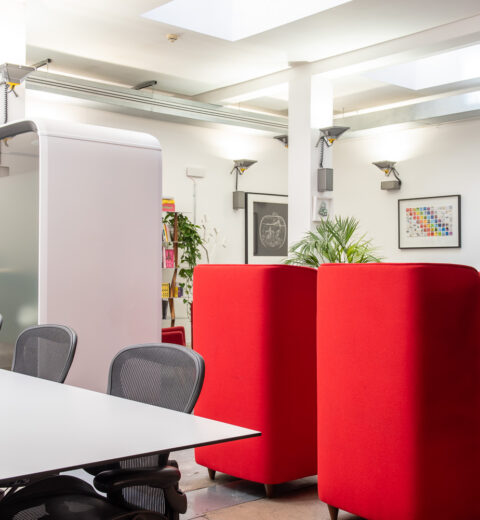Finance Basics Every Coworking Owner Should Know

Running a coworking space blends hospitality, facilities management, and community building into one dynamic business model. But behind the shared coffee, modular furniture, and buzz of remote teams is a foundational layer that can’t be ignored: finance.
Whether you’re running a single location or managing multiple hubs, understanding key financial concepts can help you make better decisions, track performance more accurately, and scale sustainably. Here’s a breakdown of essential finance basics every coworking space owner should have a handle on.
Know Your Core Financial Statements
At the heart of any financial strategy are three core reports. These documents give you a real-time snapshot of how your space is performing and where things need adjusting.
- Profit and Loss Statement (P&L) – Shows your revenue and expenses over a period, highlighting whether your coworking business is actually turning a profit.
- Balance Sheet – Gives a snapshot of assets, liabilities, and equity at a given moment. This helps you understand your financial position beyond just monthly income.
- Cash Flow Statement – Tracks the inflow and outflow of cash. It’s especially important in coworking, where income may be cyclical or affected by long-term leases and upfront memberships.
Even if you’re not crunching the numbers yourself, reviewing these monthly (with a bookkeeper or accountant if needed) is non-negotiable.
Understand Your Fixed and Variable Costs
Every coworking space has a mix of fixed and variable costs. Understanding how these interact helps you project your breakeven point and set realistic growth goals.
- Fixed costs include rent, utilities, salaries, insurance, and maintenance—expenses that remain stable each month.
- Variable costs fluctuate with usage. Think about cleaning fees for increased occupancy, snacks, printing supplies, or added marketing spend.
By tracking both, you can pinpoint when it’s time to raise membership prices, add new services, or renegotiate supplier contracts.
Watch for Accruals and Deferred Revenue
Coworking businesses often deal with multiple payment structures—daily passes, monthly memberships, long-term leases. That means your income isn’t always as straightforward as when the money hits your account.
For example, if a member pays for a six-month lease upfront, you shouldn’t count it as full revenue in the first month. Instead, the income is spread out—or deferred—over the lease period. Similarly, you might incur accrued expenses—like utilities or maintenance—that haven’t been paid yet but must be accounted for in your reporting.
Accrual accounting helps give a more accurate picture of financial health, especially when your services are paid for in advance or delayed.
Track KPIs Specific to Coworking
Traditional business KPIs like profit margin or customer acquisition cost still matter, but coworking has a few niche metrics worth adding to your dashboard:
- Occupancy Rate – How many of your desks or offices are being used at any given time?
- Revenue Per Available Workspace (RevPAW) – Revenue generated per rentable seat, desk, or office.
- Member Retention Rate – How often do members renew or extend contracts?
- Cost Per Member Acquisition – How much are you spending on marketing or referral incentives to get new members?
Tracking these over time can help identify seasonality, underused assets, or areas to improve your services.
Set a Budget—and Revisit It Often
Even a lean coworking operation needs a clear annual budget. This helps you set spending limits, forecast growth, and determine when you can reinvest into the space (think furniture upgrades, new tech, or hiring).
Include the following categories:
- Rent and facility-related costs
- Payroll and staffing
- Marketing and advertising
- Office supplies, furniture, and tech
- Software subscriptions (CRM, access control, internet, etc.)
- Events and community programming
- Emergency or contingency fund
Budgets are living documents. Revisit yours quarterly to adjust for actual performance and shifting goals.
Automate Where Possible
Financial clarity comes faster when you reduce manual work. Consider automating:
- Invoicing and payment collection through your coworking management software
- Expense tracking via integrations with bank accounts or credit cards
- Financial reporting using tools like QuickBooks, Xero, or Wave
- Payroll and tax filings through platforms like Gusto or Deel (especially if you have global contractors)
Automation minimizes errors and frees up time to focus on growth and community-building.
Think Long-Term With a Growth Lens
Coworking is no longer a fringe business—it’s part of the modern office ecosystem. Thinking long-term about revenue streams and capital investments is key to staying relevant and profitable.
Explore new income streams like:
- Hosting workshops, events, or pop-ups
- Renting space to photographers or for offsite meetings
- Offering premium services (mail handling, locker storage, dedicated parking)
- Partnering with local vendors for sponsored perks or services
Smart financial planning is the foundation for sustainable business growth. And the better your grip on the numbers, the more confident you’ll be in when and how to expand.
Final Thoughts
Finance isn’t just for accountants or investors—it’s essential knowledge for any coworking space owner. With a solid grasp of your key numbers, financial principles, and reporting practices, you can make sharper decisions, spot red flags early, and ultimately build a stronger, more resilient business. Whether you’re managing a boutique creative hub or scaling a nationwide network, financial literacy is one of the most valuable skills you can invest in.
Photo credit: eOffice



